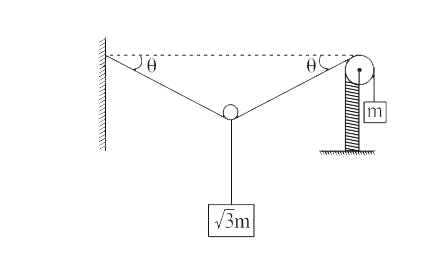The equivalance of two systems in thermal equilibrium is represented by the property of
heat
energy
temperature
specific heat
The correct Answer is:C
To solve the question regarding the equivalence of two systems in thermal equilibrium, we can follow these steps:
Step 1: Understand Thermal Equilibrium
Thermal equilibrium occurs when two systems are in contact and there is no net flow of thermal energy between them. This means that both systems have reached the same temperature.
Step 2: Identify the Property Representing Equivalence
The question asks which property represents the equivalence of two systems in thermal equilibrium. The key property that defines thermal equilibrium is temperature.
Step 3: Analyze the Options
Let's evaluate the given options:
- Heat: This refers to the transfer of thermal energy and can vary between systems in thermal equilibrium.
- Energy: This is a broader term and can also differ between systems in thermal equilibrium.
- Temperature: This is the measure of thermal energy of a system and must be the same for both systems in thermal equilibrium.
- Specific Heat: This property refers to the amount of heat required to change the temperature of a unit mass of a substance by one degree Celsius and can differ between materials.
Step 4: Conclusion
Since temperature is the only property that must be equal for two systems to be in thermal equilibrium, the correct answer is temperature.
Final Answer:
The equivalence of two systems in thermal equilibrium is represented by the property of temperature.
---
Thermal equilibrium occurs when two systems are in contact and there is no net flow of thermal energy between them. This means that both systems have reached the same temperature.
The question asks which property represents the equivalence of two systems in thermal equilibrium. The key property that defines thermal equilibrium is temperature.
Let's evaluate the given options:
- Heat: This refers to the transfer of thermal energy and can vary between systems in thermal equilibrium.
- Energy: This is a broader term and can also differ between systems in thermal equilibrium.
- Temperature: This is the measure of thermal energy of a system and must be the same for both systems in thermal equilibrium.
- Specific Heat: This property refers to the amount of heat required to change the temperature of a unit mass of a substance by one degree Celsius and can differ between materials.
Since temperature is the only property that must be equal for two systems to be in thermal equilibrium, the correct answer is temperature.
The equivalence of two systems in thermal equilibrium is represented by the property of temperature.
Similar Questions
Knowledge Check
Assertion: The zeroth law said that , when two systems A and B, are in thermal equilibrium, there must be a physical quantitiy that has the same value for both.
Reason : The physical quantity which is same for both system is temperature.ABoth assertion and reason are true and reason is the correct explanation of assertionBBoth assertion and reason are true but reason is not the correct explanation of assertionCAssertion is true but reason is falseDBoth assertion and reason are false.
What is meant by thermal equilibrium?
View SolutionThere is no transfer of heat at thermal equilibrium.
View Solutionwhen two bodies A and B are in thermal equilibrium then
View SolutionIn mollusa, nervous system is represented by
View Solution''The earth is not in thermal equilibrium with the sun.'' Why ?
View SolutionThe system is in equilibrium. Find the angle θ

View SolutionAssertion: Two systems, which are in thermal equilibrium with a third system, are in thermal equilibrium with each other.
Reason: The heat flows spontaneously from a system at a higher temp. to a system at a lower temp.
View Solution
